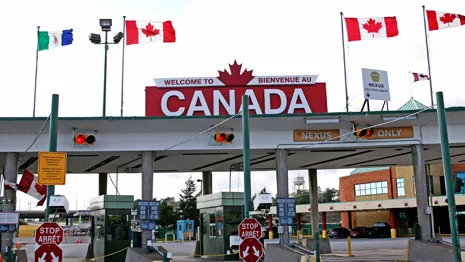Former U.S. President Donald Trump has once again brought trade policy to the center of public debate, this time with a fresh proposal: new tariff increases. While these measures are primarily aimed at addressing trade imbalances and protecting American industries, they’re causing significant concern north of the border.
Canadian officials, business leaders, and economists are watching closely—and with growing anxiety. Trump’s new tariff increases could have real and lasting consequences for Canada’s export-dependent economy, especially if he wins a second term in office.
What Are the New Tariff Increases?
Trump has proposed a sweeping plan to impose a 10% across-the-board tariff on all imports and a 60% tariff on goods from China. The goal? To reduce the U.S. trade deficit and bring manufacturing jobs back to American soil.
While these tariffs would technically apply to all trading partners, Canada—one of America’s largest and closest trade allies—could be caught in the crossfire. Many Canadian industries, particularly auto manufacturing, lumber, and agriculture, rely on integrated supply chains with U.S. companies. Any disruption in cross-border trade will hit both sides, but smaller economies like Canada’s tend to feel the pain more acutely.
Why Is Canada Worried?
Canada’s economy is heavily reliant on exports, with roughly 75% of goods shipped to the United States. If Trump’s new tariff increases take effect, Canadian exporters would face higher costs, reduced competitiveness, and possible retaliatory measures.
There’s also the risk of destabilizing the USMCA trade agreement, which was renegotiated in Trump’s first term. While USMCA currently provides a framework for resolving disputes, a return to unilateral tariffs could strain diplomatic and economic ties.
How Could This Affect Canadian Consumers?
Canadian consumers could also feel the impact. Tariffs don’t just hit producers—they tend to raise prices on finished goods, many of which are imported from the U.S. or rely on U.S. components. From groceries to electronics, the cost of living could inch upward, adding pressure in an already tight economic climate.
What Happens Next?
For now, Trump’s tariff proposals remain political promises, not policy. But with U.S. elections approaching, Canadian stakeholders are preparing for all outcomes. Officials in Ottawa are quietly working on contingency plans, while businesses brace for potential disruptions.
One thing is clear: Trump’s new tariff increases are not just an American issue. For Canada, they’re a looming concern with real economic implications.



